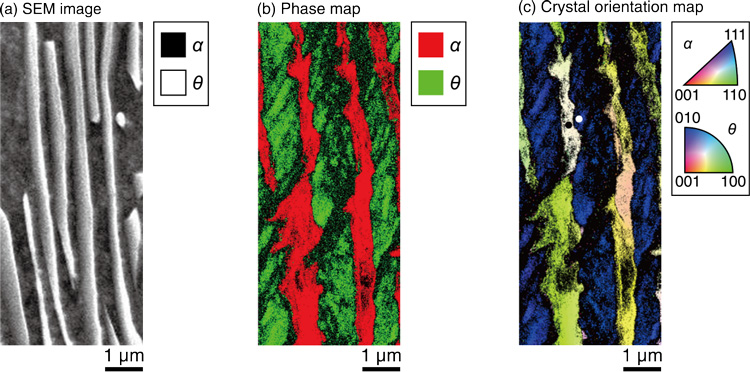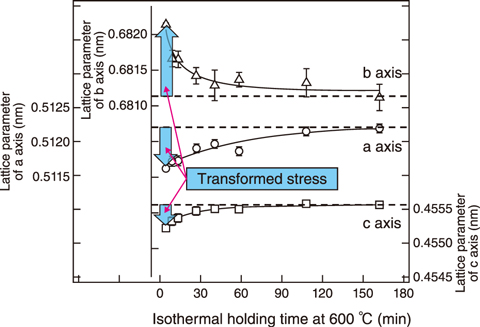
Fig.5-15 Microstructural characteristics of pearlitic steel

Fig.5-16 Evolution of the lattice parameter of pearlitic steel during isothermal holding
Steel is a kind of important structural material which is indispensable for our daily lives and presents in a variety of places, from ordinary office items to social infrastructure including long-span bridges and ultrahigh-rise buildings. The strength and ductility of steels can be controlled by optimizing the microstructural parameters including the grain size and crystal morphology. It is therefore valuable to elucidate the microstructure formation mechanism to develop higher-performance steels with high fracture resistance and good manufacturing capacity, which are highly expected for the continuous development of large social infrastructure, such as ultrahigh-rise buildings. Here, the microstructural formation mechanism of a pearlitic steel was investigated using an electron scanning microscope (SEM), electron backscatter diffraction (EBSD), and neutron diffraction.
Pearlitic steel has a lamellar microstructure, consisting of a body-centered cubic crystal structure (α phase) and a simple rectangular crystal structure (θ phase), as shown in Fig.5-15(a). The phase identification and crystal orientation maps of this steel were evaluated using EBSD. The obtained constituent phase and crystal orientation maps of the pearlitic steel are shown in Figs.5-15(b) and (c), respectively. In general, a crystal grain only shows a crystal orientation (mono color) like a single crystal. However, with a lamellar structure, the color label corresponds to a gradient change in the crystal orientation. Here, a large shift in the crystal orientation was confirmed in the α phase.
A neutron diffraction experiment was then performed using the TAKUMI (Beamline No.19), a high-resolution, high-intensity time-of-flight (TOF) neutron diffractometer at the Materials and Life Science Experimental Facility (MLF) of J-PARC. The evolution of the triaxial crystal cell parameters of the θ phase after the pearlite transformation is shown in Fig.5-16 as a function of the isothermal holding time at 600 ℃. The cell structure parameters along crystal axes a, b, and c of the rectangular crystal structure of θ phase changes with increasing isothermal holding time. This indicates that the stress that occurred during the pearlite formation (Fig.5-15(c)) was gradually released over a long isothermal holding treatment.
Hence, this stress is suggested to have an important influence on the microstructural formation of pearlitic steels. Such information is valuable in developing higher-performance steels.
This research was supported by the Japan Science and Technology Agency (JST) under collaborative research based on Industrial Demand “Heterogeneous Structure Control: Towards Innovative Development of Metallic Structural Materials”, and collaborated on with the Tokyo Institute of Technology, NIPPON STEEL & SUMITOMO METAL CORPORATION, and JAEA.